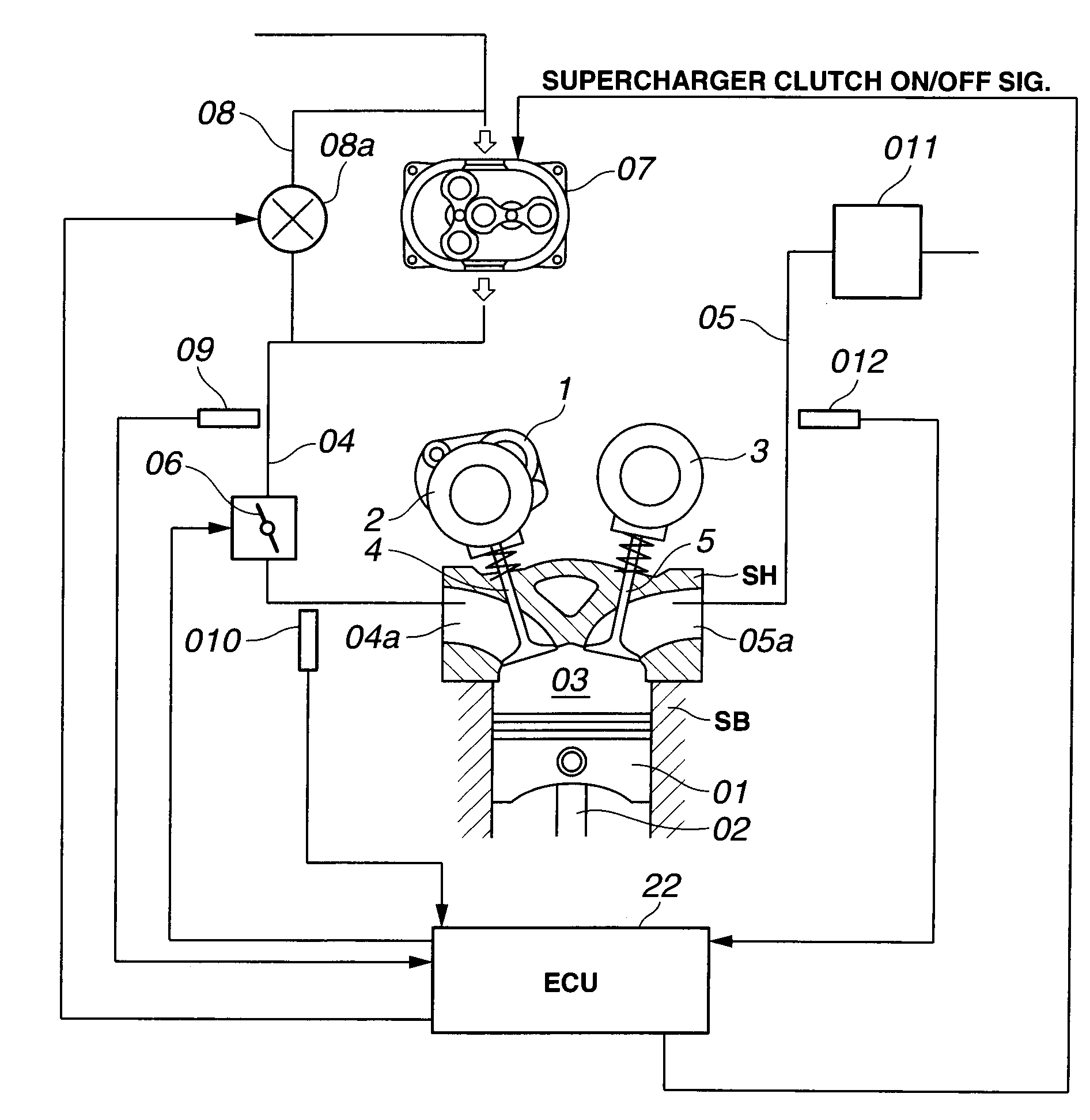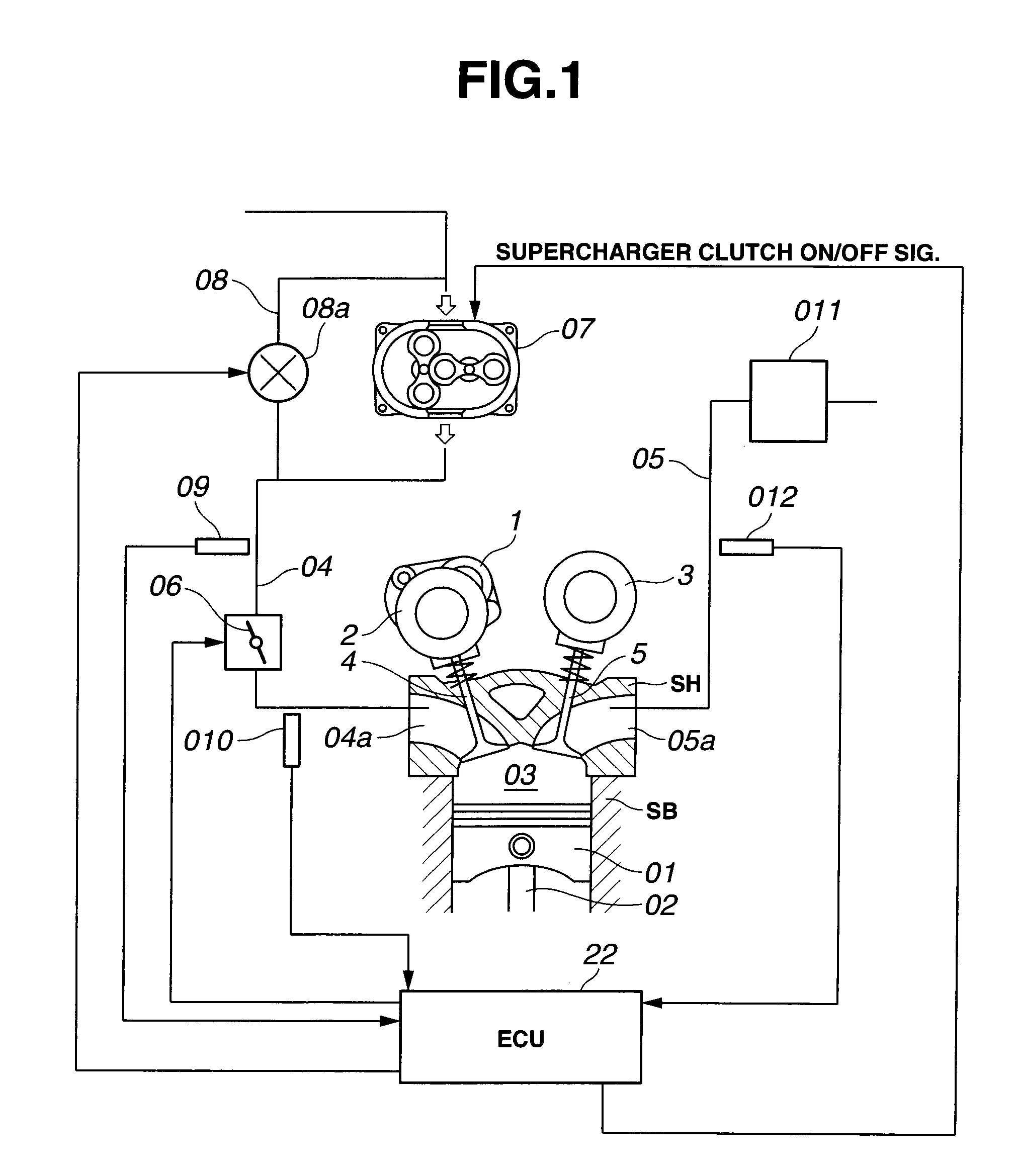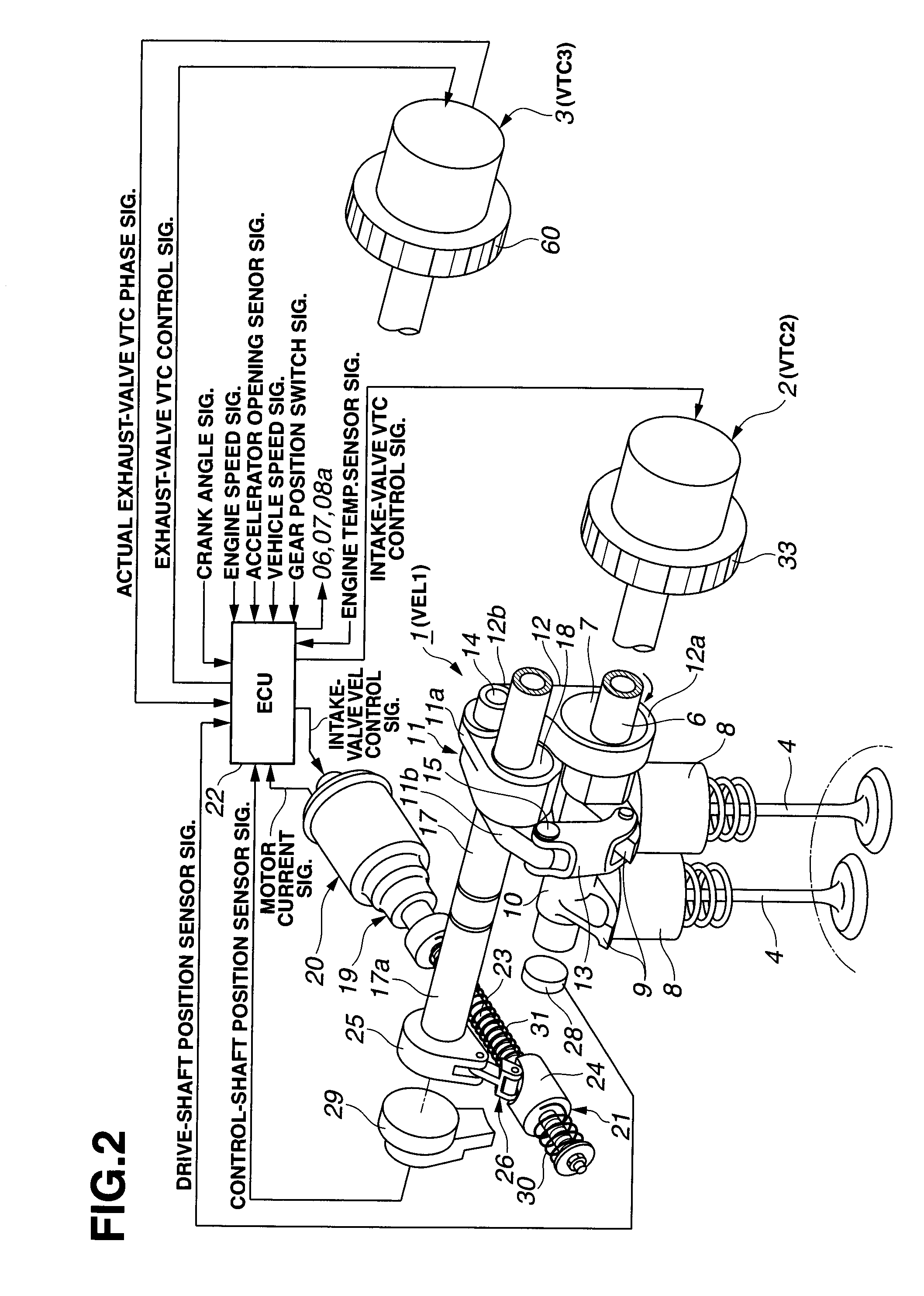Variable valve actuation system of internal combustion engine and control apparatus of internal combustion engine
a technology of internal combustion engine and variable valve actuation, which is applied in the direction of electrical control, process and machine control, etc., can solve the problems of difficult to ensure the sufficiently enhanced acceleration response and difficult to provide a sufficient vehicle acceleration response, so as to enhance the transient acceleration responsiveness as well as the transient engine torque increase, enhance the transient acceleration responsiveness and the effect of transien
- Summary
- Abstract
- Description
- Claims
- Application Information
AI Technical Summary
Benefits of technology
Problems solved by technology
Method used
Image
Examples
first embodiment
[0038]Referring now to the drawings, particularly to FIG. 1, the variable valve actuation system and the engine control apparatus of the first embodiment is exemplified in a supercharged, four-cycle internal combustion engine.
[0039]As can be appreciated from the system diagram of FIG. 1, the internal combustion engine has four valves for each cylinder, namely, two intake valves 4, 4 and two exhaust valves 5, 5 per one cylinder. An intake-valve variable valve event and lift (VEL) mechanism 1 (or an intake-valve variable lift mechanism VEL1) and an intake-valve variable phase control mechanism or an intake-valve valve timing control (VTC) mechanism 2 (or an intake-valve variable phase-angle mechanism VTC2) are installed on one axial end of an intake-valve drive shaft 6 (described later), which is rotatably supported on an engine cylinder head SH. The intake-valve VEL mechanism 1 is provided for variably controlling or adjusting a valve lift amount and a working angle of each of intake...
second embodiment
[0154]Referring now to FIG. 14, there is shown the supercharged engine control routine, executed by the controller incorporated in the system of the second embodiment, after the engine has been started. The system of the second embodiment slightly differs from that of the first embodiment, in that valve-overlap control (valve-overlap enlargement control) is achieved by exhaust valve closure timing EVC control (EVC phase-retard control) via the exhaust-valve VTC mechanism 3.
[0155]The control routine of FIG. 14 (the second embodiment) is somewhat different from the control routine of FIG. 10 (the first embodiment), in that steps S1-S6, S9-S10, S12-S14, and S16-S17 included in the routine shown in FIG. 10 are identical to respective steps S21-S26, S29-S30, S32-S34, and S36-S37 included in the routine shown in FIG. 14, but steps S7-S8, S11, and S15 included in the routine shown in FIG. 10 are replaced with steps S27-S28, S31, and S35 included in the routine shown in FIG. 14.
[0156]As see...
third embodiment
[0173]Referring now to FIG. 16, there is shown the supercharged engine control routine, executed by the controller incorporated in the system of the third embodiment, after the engine has been started. The system of the third embodiment slightly differs from that of the first embodiment, in that valve-overlap control (valve-overlap enlargement control) is achieved by intake valve open timing IVO control (IVO phase-advance control) via the intake-valve VTC mechanism 2 and exhaust valve closure timing EVC control (EVC phase-retard control) via the exhaust-valve VTC mechanism 3, so as to realize the more enhanced absolute engine power output (a high-performance supercharged engine) in a high engine speed range.
[0174]The control routine of FIG. 16 (the third embodiment) is somewhat different from the control routine of FIG. 10 (the first embodiment), in that steps S1-S4, S6, S12, and S16-S17 included in the routine shown in FIG. 10 are identical to respective steps S41-S44, S46, S50, an...
PUM
 Login to View More
Login to View More Abstract
Description
Claims
Application Information
 Login to View More
Login to View More - R&D
- Intellectual Property
- Life Sciences
- Materials
- Tech Scout
- Unparalleled Data Quality
- Higher Quality Content
- 60% Fewer Hallucinations
Browse by: Latest US Patents, China's latest patents, Technical Efficacy Thesaurus, Application Domain, Technology Topic, Popular Technical Reports.
© 2025 PatSnap. All rights reserved.Legal|Privacy policy|Modern Slavery Act Transparency Statement|Sitemap|About US| Contact US: help@patsnap.com



